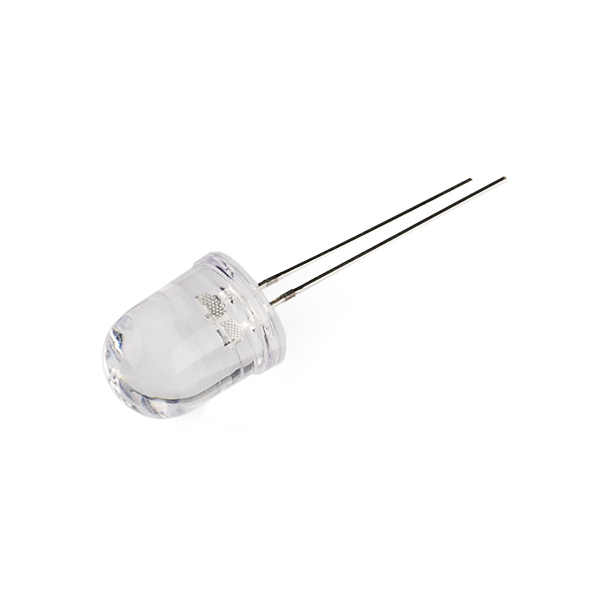These color-changing LEDs take the work out of creating crazy, flashy, blinky... ness. Simply apply power and the LED will cycle through the RGB colorspace: no external controller necessary! These bright and festive LEDs make great decorations, LED "throwies", indicator lights, etc. Typical forward voltage is 2V.
These 10mm LEDs are of the "slow-changing" variety, meaning they cycle at a rate of one color every few seconds.
LED - 10mm Cycling RGB (slow) Product Help and Resources
Core Skill: Electrical Prototyping
If it requires power, you need to know how much, what all the pins do, and how to hook it up. You may need to reference datasheets, schematics, and know the ins and outs of electronics.
Skill Level: Rookie - You may be required to know a bit more about the component, such as orientation, or how to hook it up, in addition to power requirements. You will need to understand polarized components.
See all skill levels
Comments
Looking for answers to technical questions?
We welcome your comments and suggestions below. However, if you are looking for solutions to technical questions please see our Technical Assistance page.
Customer Reviews
No reviews yet.



I really wish you'd get these in diffused.
just sand it, it works pretty amazing when sanded
The data sheet says these need around 4.5V to operate (as low as 2 and high as 5). Both the green and blue have a forward voltage of 3.5V so I wouldn't have thought they would work too well at 2V :)
The same with me) Yet, it works great!
I've had one connected to a CR2032 (just taped on like a Throwie) for about 8 hours and it is still going strong. Works great. Using it in a jack-o-lantern for a different mood effect.
What’s the right resistor if we use it with coin battery (3V) such as CR1225 or CR 2032? and how long would they last? thank you for your help in advance.
What are the advantages of a larger LED? These seem to have the same specifications as the smaller LEDs. It's for lighting a raspberry pi. Could I solder this to a usb cable and use a 10 ohm resistor? Also, what time is each color displayed for?
Somebody asked for the LED - 10mm Cycling RGB (fast) what would happen if you were to PWM it. Read my initial reply there.
This is a follow-up post giving actual behavior, but for this LED instead (as that's what I picked up), just as an example.
Reference Graph
Essentially, if you were to PWM these, you'll need a high duty cycle (94% and less just caused the initial color, red, to appear) and at a very high frequency (at 99% duty cycle, 540kHz) to get it to do anything useful.
Higher values do not correspond to any particular change in behavior (e.g. brighter/dimmer or speed of program).
Once in color cycling mode, however, reducing the frequency causes some fun behavior. Going just below the frequency at which it begins color cycling, causes the program to exhibit errant behavior. Primarily it cycles between yellow, yellow-orange, lime and pink then snaps back to yellow. At higher duty cycles, a secondary errant behavior becomes apparent at even lower frequencies, where it fades between blue and warm white - slow at higher frequencies, faster at lower frequencies.
Going lower still will snap it back to a defunct state in which just the initial color (red) shows.
The numbers: duty On (kHz) Errant A (kHz) Errant B (kHz) Defunct (kHz) 95 1890 1880 940 96 1350 1345 670 97 1080 1075 500 480 98 810 805 400 265 99 540 535 265 175
In summary: Don't PWM these.. there's really no point :)